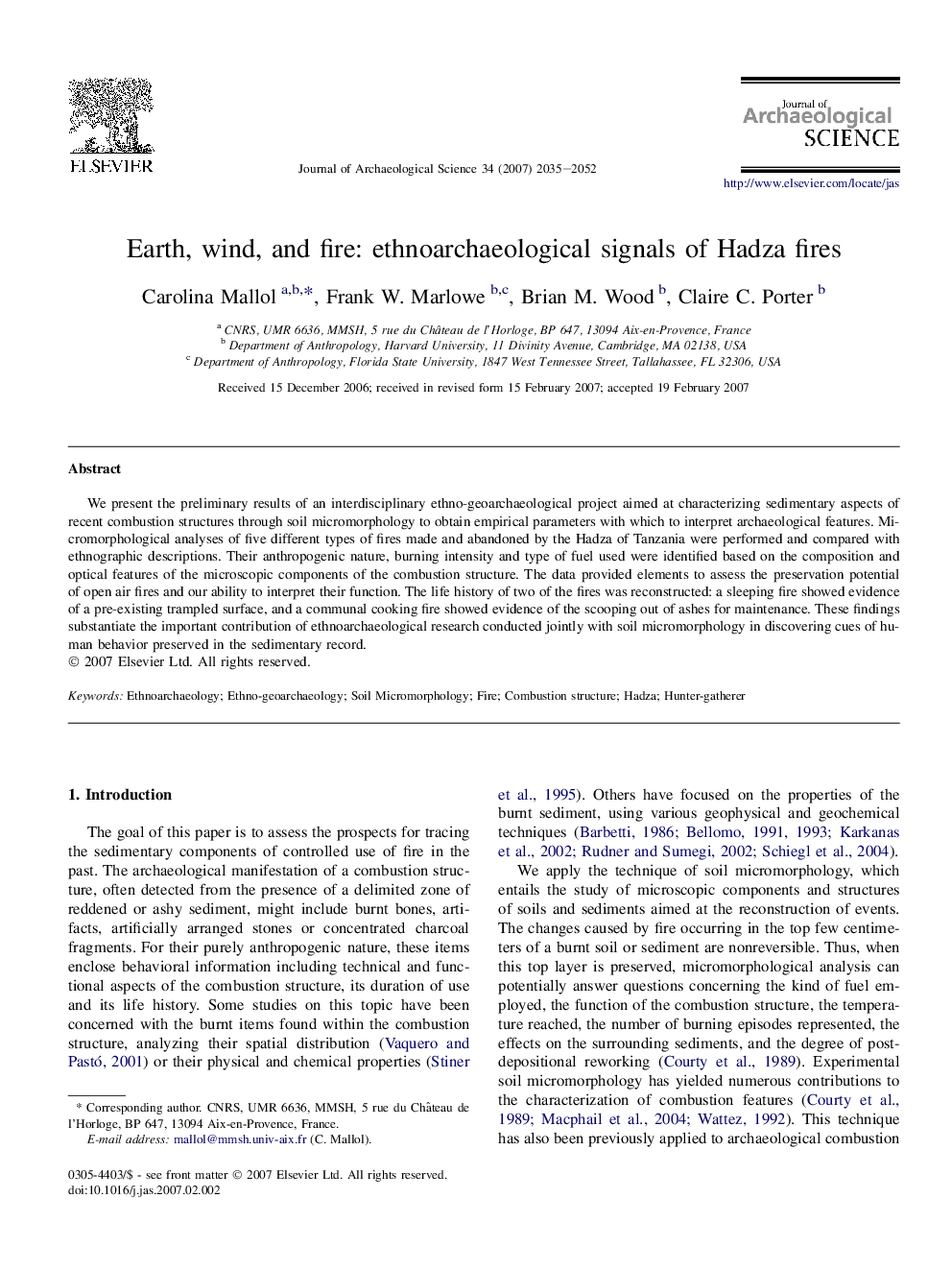| Article ID | Journal | Published Year | Pages | File Type |
|---|---|---|---|---|
| 1037227 | Journal of Archaeological Science | 2007 | 18 Pages |
We present the preliminary results of an interdisciplinary ethno-geoarchaeological project aimed at characterizing sedimentary aspects of recent combustion structures through soil micromorphology to obtain empirical parameters with which to interpret archaeological features. Micromorphological analyses of five different types of fires made and abandoned by the Hadza of Tanzania were performed and compared with ethnographic descriptions. Their anthropogenic nature, burning intensity and type of fuel used were identified based on the composition and optical features of the microscopic components of the combustion structure. The data provided elements to assess the preservation potential of open air fires and our ability to interpret their function. The life history of two of the fires was reconstructed: a sleeping fire showed evidence of a pre-existing trampled surface, and a communal cooking fire showed evidence of the scooping out of ashes for maintenance. These findings substantiate the important contribution of ethnoarchaeological research conducted jointly with soil micromorphology in discovering cues of human behavior preserved in the sedimentary record.
